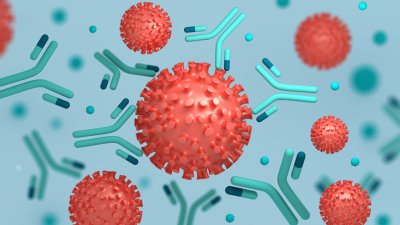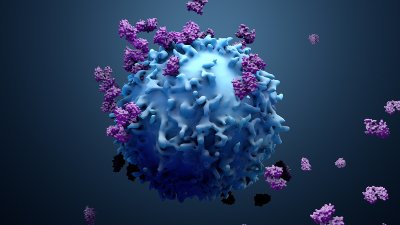
Cellular systems and quantitative systems pharmacology
Cellular systems are highly complex, with feedback mechanisms typically operating over multiple time and length scales. This complexity means that mathematical approaches are ideal for investigating a range of cellular processes.
We explore both fundamental biological processes such as tissue development and cell signalling as well as more applications based research in pharmacokinetics and pharmacodynamics.
Research leads
We work closely with experimental collaborators and industrial partners including Syngenta, AstraZeneca, GlaxoSmithKline and Pfizer and have representatives in the Quantitative Systems Pharmacology-UK (QSP-UK) network.
If you'd like to collaborate with us, please get in touch with one of our team members below.

Professor Philip Aston
Professor

Dr Carina Dunlop
Senior Lecturer
Drug delivery in tissues and tumours

The spatial distribution of drugs within tissues is a major factor in determining their efficacy and the dynamics of treatment. Determining correct dosages and treatment protocols all depend crucially on understanding how the drug will reach the tissue and at what concentration. Equally, it is becoming increasingly clear that biological tissues are highly heterogenous with multiple cell types and vessels affecting diffusive processes.
This research strand led by Carina Dunlop focuses on developing spatial descriptions of drug distribution in both healthy and disregulated tissues. This is a cross-cutting theme interfacing with pharmacokinetic-pharmacodynamic (PKPD) research and tissue modelling research throughout our group.
Drug-receptor interaction modelling

Drugs like antibodies aim to bind with receptors (antigens) to be effective. The receptors can have one or more binding positions. Central to the analysis in this research theme led by Philip Aston is the target mediated drug disposition model (TMDD), in which a receptor binds with only one antibody, and its extension to binding with one or two antibodies (dimerisation model). It is assumed that the binding is the fastest process. This gives a separation of time scales, which allows us to use geometric singular perturbation theory to analyse these models. In both models, the slow manifold consists of two components, which intersect transversely in the origin. The dimerisation model leads to a degenerate intersection.
To analyse such intersection, we consider a general two parameter slow-fast system in which the critical set consists of a one dimensional manifold and a two dimensional manifold, intersecting at the origin. Using geometric desingularisation, we determine the fate of the incoming one-dimensional manifold, which can be a jump away from the critical set or an exchange of stability between the attracting components of the critical set. The ultimate goal is to return to the dimerisation model and give the approximation of the full dynamics in the dimerisation model. This technique can be used to analyse similar models as well.
Mechanobiology

This area of research led by Carina Dunlop focuses on the cell as a physical object, incorporating an understanding of the role of mechanical forces into models of biological processes.
It draws on a diverse range of concepts in pursuing this research ranging from population modelling to the theories of fluid dynamics and elasticity theory. In particular, mechanotransduction and tissue self-organisation and morphogenesis.
Mechanotransduction
Cells are observed to respond directly to changes in the mechanical properties of their environments with e.g. type specification, growth and death all being found to be sensitive to changes in substrate stiffness. Importantly this mechanotransduction must be carefully coordinated within tissues to account not just for cell-substrate but also cell-cell interactions.
Tissue self-organisation and morphogenesis
Tissues grow and shape themselves through the physical actions of individual cells, which include moving, adhering, and contracting. Crucially these behaviours must be carefully controlled through cell-cell and cell-matrix signalling to ensure the regulation of tissue size and shape. To model this process of tissue growth and shape control a range of approaches is used including agent-based simulations and continuum modelling.